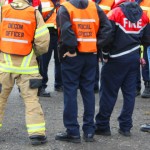By Merritt Kearns and Matthew Bombace
The Incident Command System (ICS) is an all-hazards management system suitable for responding to incidents of all sizes and complexities. ICS was originally developed in California in the 1970s through a cooperative effort of local, state, and federal fire agencies to more effectively manage wildfires.
The fire service has been using ICS on a daily basis for more than 30 years and has also been widely adopted by many law enforcement agencies. However, recently ICS has been applied beyond the public safety realm and used by private-sector and non-governmental organizations.
Widespread Adoption of ICS in Public Health
ICS has been adopted by public-health agencies, disaster-relief organizations, and environmental-regulatory agencies.

This widespread adoption underscores the fact that ICS is rapidly being implemented by a growing number of diverse organizations and is applicable beyond public safety organizations.
The Benefits of ICS
ICS was traditionally used for response and recovery from emergencies, natural disasters, and terrorism events. It has evolved to better manage all types of emergency incidents, but the basic tenets remain the same:
- It is adaptable, flexible and scalable so it can incorporate multiple agencies from different jurisdictions.
- ICS can expand or contract depending on the particular incident.
- It relies on common terminology, rather than 10-codes or other local radio codes, so all agencies involved can effectively communicate.
- ICS allows organizations with different legal, functional, and geographic responsibilities to work together on all types of incidents.
In the decades since its inception, ICS has evolved to become the foundation for the National Incident Management System (NIMS). NIMS was authorized in 2003 by Homeland Security Presidential Directive 5 to provide a consistent, coordinated, nation-wide approach for emergency operations across all levels of government. NIMS provides an approach for federal, state, and local governments to effectively prepare for, respond to, and recover from domestic incidents, regardless of cause, size, or complexity.
As ICS becomes a more mainstream incident management approach and more organizations utilize the system, it will be important to remember that ICS was originally designed to help organizations work together more effectively in order to reach a common goal. We must remember the core principles of ICS while looking for ways to improve our response and recovery efforts.
About the Authors:

Matthew Bombace received his associate’s degree in Fire Science Management from American Military University. He is currently pursuing a bachelor’s degree at American Military University in the Emergency and Disaster Management program. Matt is a retired Marine and currently serves as a firefighter at the Ridgewood, NJ Fire Department.